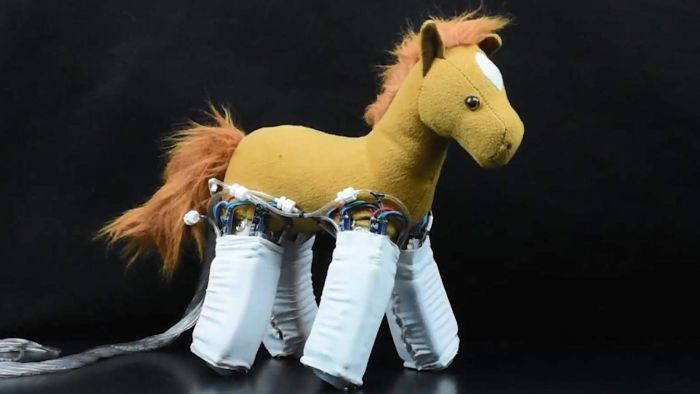
Researchers Develop ‘Robotic Skins’ To Aid Astronauts In Mars Explorations
Scientists have come up with new “robotic skins” technology that aids in turning everyday objects into robots by their users. The technology was actually developed to help astronauts in Mars explorations where the environment cannot be predicted.

According to the researchers at the Yale University, who were involved in developing and designing it in partnership with NASA, the skins could be utilized for everything like from search and rescue robots to animate the inanimate everyday objects to wearable technologies.
The technology is reusable that helps astronauts to accomplish systematic tasks with the same kind of reconfigurable material.

The skin that is utilized in a robotic arm just out of a piece of foam could be removed and applied to make a soft Mars rover that can roll over through rough terrain.
With the help of those robotic skins, one can make a robot with a purpose out of balloons to balls of crumpled paper.
“One of the main things I considered was the importance of multifunctionality, especially for deep space exploration where the environment is unpredictable,” said Rebecca Kramer-Bottiglio, Assistant Professor at the varsity.
Elastic sheets embedded with sensors and actuators are utilized in making the skins. Then, they are placed on any deformable object like a stuffed animal or a foam tube, for example, then after that, these skins animate these objects from their surfaces.
The performance of the makeshift robots can be applied to different tasks and this entirely depends upon the properties of the soft objects and how the skins are applied.
“We can take the skins and wrap them around one object to perform a task – locomotion, for example – and then take them off and put them on a different object to perform a different task, such as grasping and moving an object,” Kramer-Bottiglio said.
“We can then take those same skins off that object and put them on a shirt to make an active wearable device,” she added.
The results of the research work were published in the journal Science Robotics.
The team made some handful of prototypes to demonstrate the robotic skins in action. These prototypes include foam cylinders that can move like an inchworm, a shirt like a wearable device that can be used to correct the posture and a device having a gripper to grasp and move objects.
You May Also Read: Google Choses Indian Startup, SigTuple, For Demo Day Asia Award